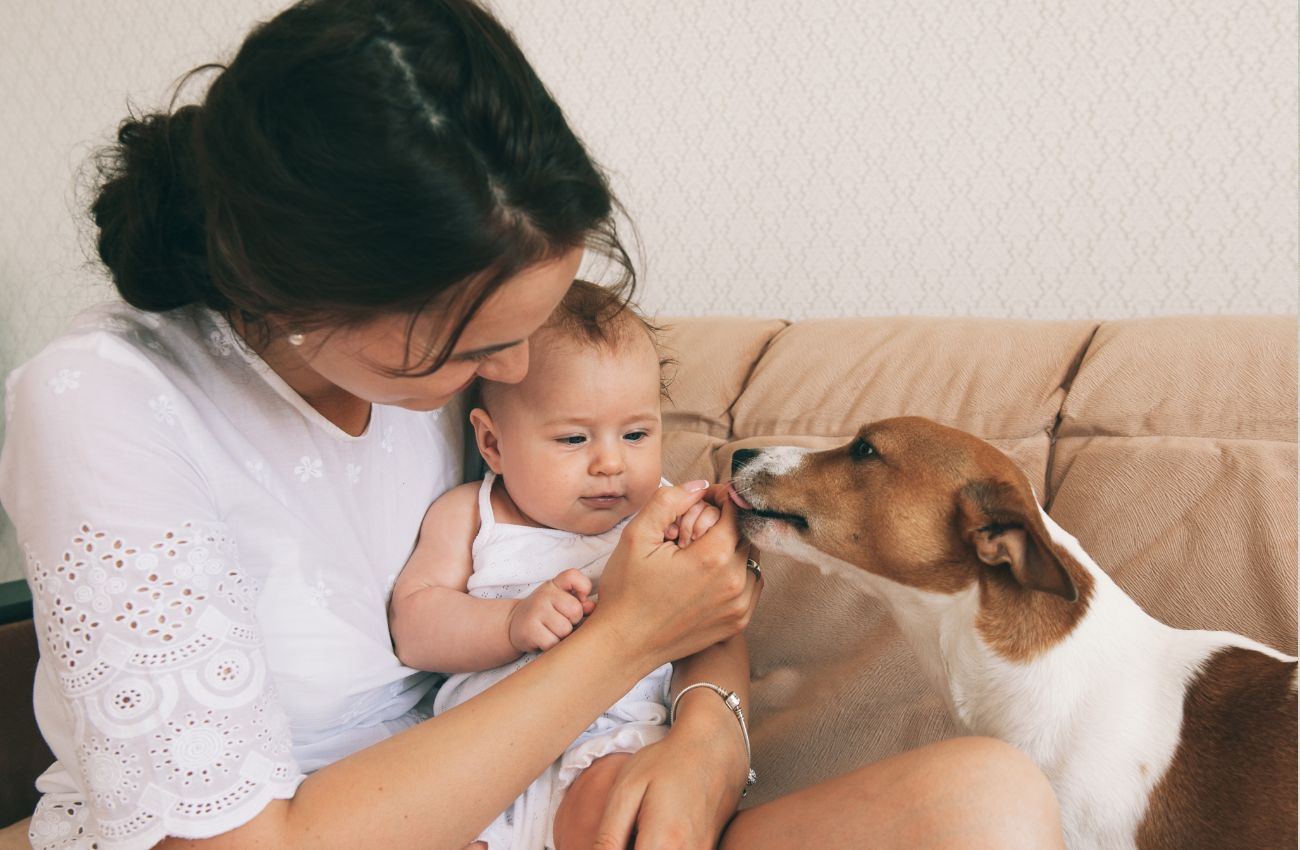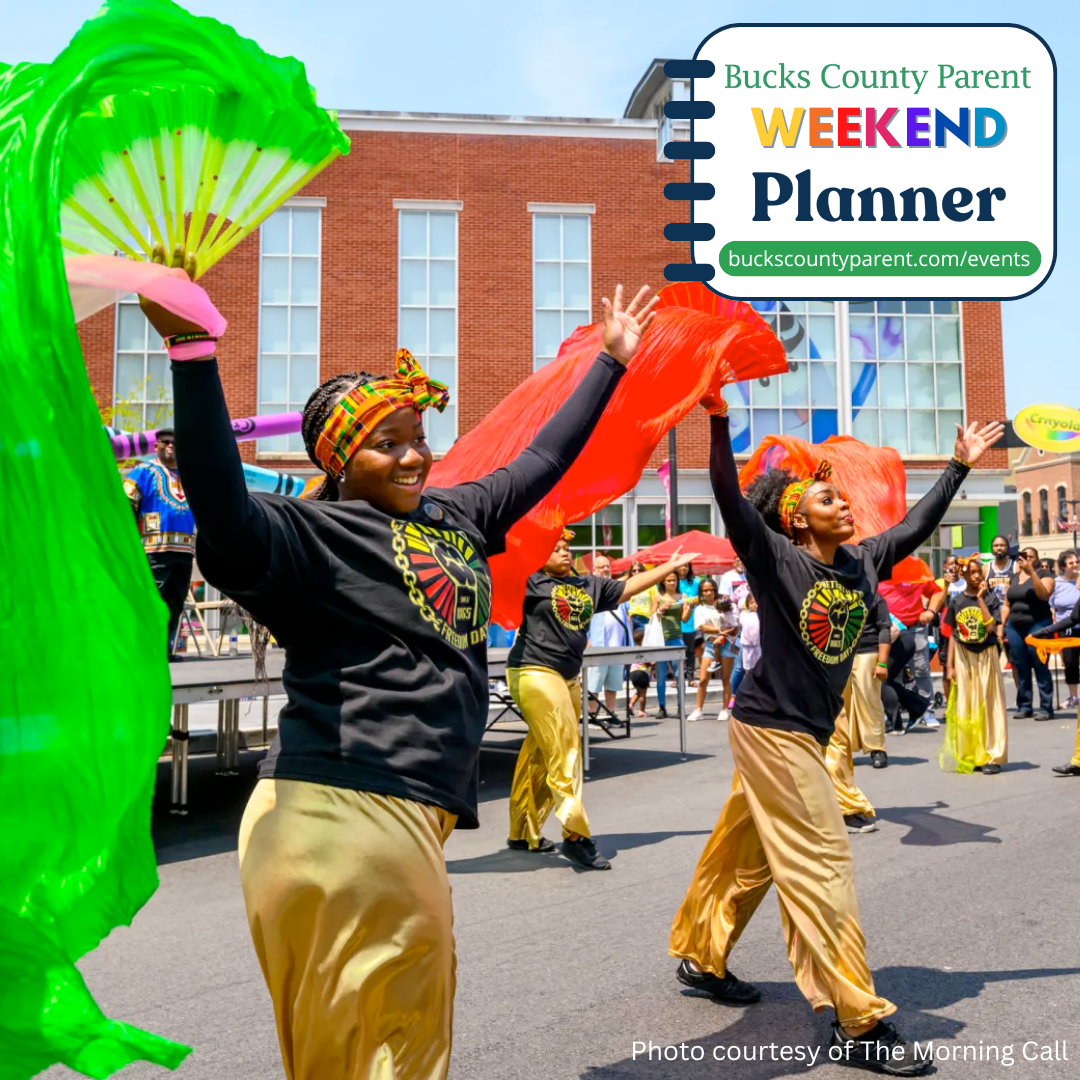Get Ready for the Meet Cute: Introducing Your Pet to Your New Baby
The first step to fostering a positive relationship between your pet and child is to start before baby even arrives.

Introducing your pet to your new baby can be exciting. After all, your pet was your first baby! But it can also come with some questions and uncertainties. How will your pet react to a newcomer in the house? Here are some tips, provided with the help of local animal experts, veterinarians and pet parents, to ensure a smooth transition for everyone in your household.

Before Your Baby Arrives
Change Your Pet’s Environment Gradually
Whether adding new furniture to your home, or creating a nursery, do so in small stages to allow your pet time to adjust. Pets rely on consistency, and even small changes to their environment can cause considerable stress. When the various areas are finished, play with your pet in those spaces to help build positive feelings about them.
“Any changes you plan to make once the baby comes, such as removing your dog from the bedroom at night or keeping your dog off the couch, need to happen well before the baby arrives. You don’t want the dog to associate the new baby with the frustration or scariness of big changes like new sleeping arrangements.”
Jacqueline Brister, for Animal Hospital of Warwick.
Create a Positive Association With Baby Smells
Ask just about anyone how to prepare your pet for your newborn and most people will recall their labor and delivery nurses advising them to bring home something from the hospital with their baby’s scent (like the hospital blanket). But you can prepare your pet well before baby even gets here. Begin to associate the smell of baby detergent, lotions, powders, and other products with high value treats. This will form a positive association to your baby before they’re even born.
“We have cats, two when my daughter was born. I had someone bring home the baby cap they put on her at birth and lay it on my bed so they could get familiar with her scent. Now, at 6, they let her carry them around at ripe old ages of 9!” Bucks County Parent Molly Lorentz.
Teach Your Pet Basic Training
If you have a dog, enroll them in obedience training. Once your dog can perform the basics, practice them while doing soon-to-be familiar baby tasks. For example, practice a down stay while walking around with a doll. “It will be helpful to ensure he is capable of basic commands such as “sit,” “drop it” or “leave it,” and “stay.” These commands give your dog the opportunity to get rewarded and will serve as a nice distraction if he starts to show anxiety or overactive behavior around the baby,” says Brister.
Learn Your Pet’s Body Language
You should learn your pet’s body language and their individual signs of stress. This will be important to carefully monitor during interactions with the new family member and intervene before a situation can become dangerous. “Signs of stress or anxiety that could precede a bite or scratch may include panting, pacing, avoidance, “whale-eyeing” (whites of eyes showing), ears pulled backward, growling, or excessive licking,” says Dr. Danielle Esplin VMD of Central Bucks Veterinary Hospital, located in Doylestown.
Create a Safe Space
When your pet begins to show signs of stress or overwhelm, it’s important for them to have a safe space where they can retreat to, says Dr. Esplin. Make sure they have access to the bed or crate that makes them feel secure. Once they are in their safe space, it is important to respect the area and not encroach on them. Dogs prefer to have enclosed, den-like spaces while cats prefer vertical spaces such as cat trees, shelves, and windowsills to retreat to and recharge. “A great addition to their safe space location is the plug-in calming pheromone Adaptil (for dogs) or Feliway (for cats),” Dr. Esplin adds.
Get Your Pet Familiar With Baby Sounds
A baby’s crying and screaming can be disturbing to animals, so preparation is key. Throw on a recording of a baby crying (Youtube should be a great resource). Play the recording at a low volume while your pet is eating or playing. With each session, raise the volume just a little until your pet appears more comfortable with the sounds. Exposing your pet to various baby toys and other sound-making devices before baby arrive can also help your pet be less anxious if and when they hear these sounds.
“If you notice that these sounds make your pet anxious at any point, stop and re-introduce the noises at a lower level and in a more gradual manner. Always give plenty of treats and praise to ensure these sounds are associated with positivity.”
Brister
Create Home Barriers
Caring for an infant can be exhausting, let alone without having to supervise pets, especially if you’re on your own. One easy way to manage this is to keep your pets on another level or area of your home by installing gates or closing doors. Whether your baby is sleeping in your bedroom or a nursery, be sure to keep the door closed to limit your pets’ access.

After Your Baby Arrives
Try to Keep Your Pet’s Routine
In the hustle and bustle of welcoming a new baby, it can be easy to throw off your pet’s routine. Whether it’s mealtime or time for their afternoon walk, try not to shift these around if you can help it. Have one person play or walk them while someone else tends to the baby or bring in a friend or relative to help.
Always Supervise
No matter how well you may think you know your pet, never leave your animal alone with your baby. There are too many variables when it comes to animals and young children. As your child grows, supervision will continue to remain important. Your child must never be allowed to grab, chase, or pick up your pet. When supervision isn’t possible, use a gate or locked door keep them separate.
Keep the Home Organized and Avoid Hazards
“We often see both dogs and cats that eat toys, objects, and foods that they should not when they have a new family member arrive. Be sure to keep your pet away from commonly ingested items such as pacifiers, bottle caps, socks, clothing items, and other objects that may be easily swallowed and ultimately obstruct their intestinal tract, potentially needing emergency surgery to remove.”
Dr. Danielle Esplin VMD, Central Bucks Veterinary Hospital
Remember this, as well as common pharmaceuticals and foods that can be toxic to pets such as ibuprofen, acetaminophen, grapes, raisins, xylitol (sugar-free gum ingredient), onions, garlic, and chocolate. Young babies and grandparents often accidentally drop these foods on the ground, and even ingestion of a small amount can be quite harmful to your pet.
Be Patient
Perhaps most importantly, be patient and remain calm during all the new changes and challenges that your child and dog will be experiencing together. Voice any and all concerns about your pet’s health and behavior with your veterinarian. “Remember that adjusting to a new family member can be a gradual process for everyone in the household, and for pets this adjustment process can take months. Be patient, understanding, and supportive of them throughout the transition period,” Dr. Esplin advises. And enjoy watching that bond between your pet and child grow!
Photos Courtesy of Canva





